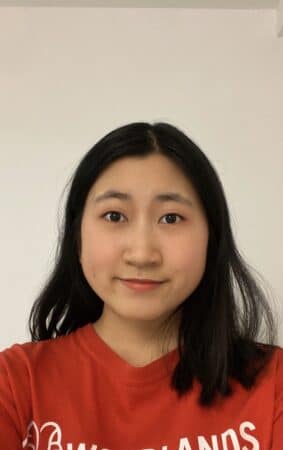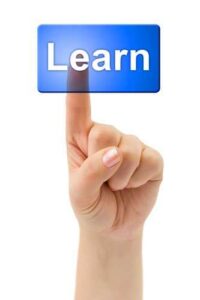Memory Palace Technique with Examples
- Posted by Brian Stocker
- Date January 1, 2021
- Comments 2 comments

The Memory Palace Technique
The Memory Palace Technique creates stories with familiar places and objects which are associated with certain information. Let me explain the process, let’s us an example to help simplify. We are going to memorize the number five hundred twenty two. To begin we pick a familiar location, for me I choose from my home, school, etc. Places you are familiar with and that you can “virtually walk through”. We will choose my home for this example.
Choose a Start
Once the location is chosen you need to identify specific objects within that location. For example, we will choose the front door, and the piano. The first location, the front door will be associated with the first number (or desired information). The five will be associated with the door. Then we associate the five with something you understand (we will do the same with the 2’s). Personally I associate 5 will my best friend and I giving each other a high 5. Allow me to take a step back and explain. As we begin to associate not only the number (5) with a person/action (my best friend and I high fiving) we are creating a story. Like I mentioned earlier the 5 is associated with the door. So in your mind you imagine standing at your front door giving a high 5 to your best friend. Now this piece of information is “backed up” by a place, person, and action. Choose actions/ people/ and places that you are familiar with. For me 5 and high fives associate, whenever I think of high fives I think of the number 5. For you it may be different. What matters is that without fail you’ll remember!
Walk Around!
As we continue on we realize we still have the 22 of the 522 we need to memorize. Think back to where we identified the piano in the living. So in your mind we will “walk” from the front door where I’m giving my friend a high five to the piano. Now we need to associate 22 with a action. For me 22 is easily memorized by the song “22” by Taylor Swift. Accordingly, my mind story involves Taylor Swift singing 22 on my piano. So my mind story begins with me at my front door high fiving my friend. Then, walking to my piano where Taylor Swift sings 22. I then know I was memorizing 522, the 5 from the high five, and the 22 from the piano and Taylor Swift. Mind stories are limitless with how much information and “locations” you can add into a story.
Now this seems quite complicated and some may say that it’s too much work to memorize. However, with practice comes perfection. It takes time to be able to associate certain information with these places, people, and actions. It takes effort to create mind stories.

Adapt!
I discovered the key to honing studying techniques is adaptability. Initially using memory palace and space repetition techniques, my study habits evolved to a more structured method as schoolwork became more demanding:
- Make studying a ritual
– Same time, same place - Start before you start
– Self-isolate
– Free your mind from distractions - Spend time on quality, not quantity
- Write it, read it, edit it
- Self-evaluate by teaching someone
- Take breaks
- Hydrate
More Memory Palace Technique Examples
Memorize the Steps of Photosynthesis

Use the Memory Palace Technique to memorize the steps of photosynthesis:
Step 1: CO2 and H2O enter the leaf
Step 2: Light hits the pigment in the membrane of a thylakoid, splitting the H2O into O2
Step 3: The electrons move down to enzymes.
Step 4: Sunlight hits the second pigment molecule allowing the enzymes to convert ADP to ATP and NADP+ gets converted to NADPH
Step 5: The ATP and NADP is used by the Calvin cycle as a power source for converting carbon dioxide from the atmosphere into simple sugar glucose
Step 6: The Calvin cycle converts 3CO2 molecules from the atmosphere to glucose
Under normal circumstances, you may have just repeated the process in your head a hundred times. When the test day, comes and you are sitting in the classroom answering the question, you doubt yourself if the electrons moving down to enzymes was in step 3 or 5. You sweat and mentally cry about your studying method failing you.
However, if you were to use your memory palace, it would go something like this: (Bear with me, you do have to actively imagine what I say in your head for this to work)
First, imagine you are walking in a thick forest, and you come across this friendly cottage. Imagine that this house represents the “leaf”. You are curious and want to enter the house, but it is locked. To “enter” the house, you carry two buckets filled with “CO2” and “H2O”. The door opens, and you are in the living room. You set the two buckets onto the coffee table and noticed the intense afternoon “light” entering from the window and shining onto the two buckets. Out of surprise, you see the H2O bucket slowly evaporating into “O2”. Before you can react, you are picked up by thousands of big-sized “electrons”, and they carry you “down” to the hallway.
Memory Palace Technique for Anatomy & Physiology

I assigned 11 points on my body. Top of head, eyes, mouth, ears, throat, shoulders, sternal notch (bottom of neck), chest, stomach, back pocket (ok, it was actually my butt), knees. I then assigned each cranial nerve, in order to these points in a way I could remember.
- Olfactory nerve. I pictured an old factory sitting on top of my head, chugging away very black and toxic smoke. The Olfactory nerve transmits messages of smell to your brain.
- Optic nerve. I pictured a pair of old fashioned glasses sitting part way down my nose. The Optic nerve innervates the eyes for sight.
- Oculomotor nerve. Here I had an eyeball in between my lips. I would move my lips around (holding a “whistling” pose) to make the eyeball look around. The Oculomotor nerve relays motor nerve to eye for all but two eye muscles.
- Trochlear nerve. Trochlear means “pulley”. I had a pully attached to my shoulder, and pulling on the rope through the pulley moved my eyeball. Trochlear nerve feeds the superior oblique muscle of the eye.
- Trigeminal nerve. I pictured three (tri) gem stones at the base of my neck, kind of in the shape of two eyes and round mouth. The Trigeminal nerve innervates parts of the face.
- Abducens nerve. This was my shoulder. I pictured myself ramming my shoulder into someone’s abdomen. Their eye popped out and was just hanging by one muscle. The lateral rectus muscle to be exact. Which is what this nerve innervates.
- Facial nerve. I pictured a face shape pushing out of the skin of my chest. It was moving around making different facial expressions. The Facial nerve supplies sensory and motor nerves to muscles of facial expression, part of tongue, and some others.
- Vestibulocochlear nerve. I envisioned myself dressed as a clown wearing a vest, balancing on a ball holding a can of coke. This nerve feeds the inner ear and is responsible for balance.
- Glossopharyngeal nerve. This one involved a glossy potbelly with a big tongue hanging over it. It innervates parts of the tongue and back of the pharynx (throat).
- Vagus nerve. This is a nerve I learned many years ago so I did not assign a position to it.
- Accessory nerve. A bunch of accessory items hanging from my neck. I didn’t want them swinging around so I stuck them into my back pocket. The Accessory nerve feeds the muscles in your neck.
- Hypoglossal nerve. This was my knees. I am hyper and bouncing up and down on my knees on glossy fat tummy (to tie in with the 9th nerve). I also know that gloss is the root word for tongue. This nerve innervates parts of the tongue.
The keys are to make them graphic, something you can see in your mind. Some of these I had to change and modify, but most worked as they were. After using them for a while with my Anki flash cards, I now can tell them by number rather than part of the body.
Quick Tips on Improving your Memory
- Repeat information out loud: Saying it out loud reinforces it and makes recall easier.
- Use mnemonic devices: Mnemonic devices such as acrostics, rhymes, and mental imagery can help to associate new information with something that’s already familiar to you, making it easier to remember. How to use mnemonics Memory Palace Technique
- Space out your study sessions: Instead of cramming all of your studying into one session, try spreading it out over several days. This is known as the spacing effect, and it can help to improve your ability to recall information in the long-term. If you have to cram well, here is how to do it
- Test yourself: Testing yourself is an effective way to improve your memory. You can use flashcards or take practice quizzes to test your recall.
- Get enough sleep: Getting enough sleep is essential for a memory (and your brain) . Sleep helps to consolidate memories, so if you’re sleep deprived, it will be harder to remember new information.
- Stay active: Regular exercise can improve blood flow to the brain, which in turn can help to improve memory and cognitive function.
- Practice mindfulness: Mindfulness techniques such as meditation and yoga can help to reduce stress and improve focus, which can in turn improve memory.
- Engage with the material: The more you engage with the material, the more likely you are to remember it. Try to relate it to something you already know, find a way to make it interesting to you, or try to create a mental image of it.
More on Memorization and Test Prep

How to Answer Different Types of Questions
Study Skills, Tips and Methods to Try
Taking a Test? Shake things up and try something new! Study tips and methods submitted by students

Date Published: Friday, January 1st, 2021
Date Modified: Monday, August 26th, 2024
Created by Brian Stocker and the team in Victoria, BC.
Helping students succeed since 2005
Got a Question? Email me anytime - Brian@test-preparation.ca
You may also like
How not to Get Distracted while Studying
Just eliminate all distractions! Well, unfortunately it’s not that easy for me. I will fiddle with my pen, doodle in the textbook, get lost in thought looking out the window, or make up a song while tapping on my desk. …
Super foods for studying
Imagine taking a test and then hearing a loud “CRUNCH,” just to see the student in front of you biting into raw broccoli Or you look over and see someone eating walnuts while marking off their exam. You wonder, “What …
Mindfulness – Top Study Method
Doing well on exams may not be enough anymore. You need to graduate with marks that wow, dazzle and sparkle. Standardized testing is currently how comparisons are made among schools and between students. As a student you are in control …

2 Comments
Very helpful piece of info. Thanks for sharing
This is really a great site.